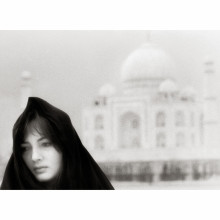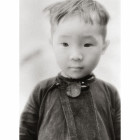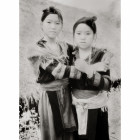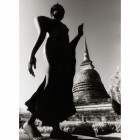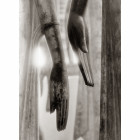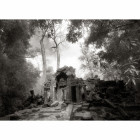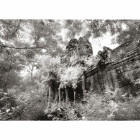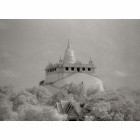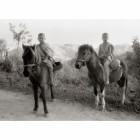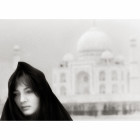About
Humans race toward the future on a titanic treadmill of development and technology with promises that this development and technology will bring happiness and understanding to their lives. Remnants of ancient peoples are coerced or forced to assimilate into the norm and sacred sites of the past are dressed up like theme parks, devoid of all their magic and mystery.
My quest began twenty-seven years ago, when I set out for India with my 1972 Nikon F2 and a few rolls of infrared black & white film . . . just to see.
The emulsion of infrared film is sensitive not only to visible light, but also to infrared light — a portion of light from the huge bandwidth outside the boundaries of the naked eye. Once developed, a traditional black-and-white negative is attained, yet photographs printed from these negatives reveal extraneous subtle light from a hidden world . . . a world that really does exist beyond the confines of our visual spectrum.
After India, my photographic journey continued through Burma, Cambodia, Thailand, Laos, and Vietnam.
I chose infrared black-and-white film as a medium on which to illustrate a dream-like timeless Asia . . . like a bridge on which to cross over the boundary of the imagination, my photos became a way of portraying Eastern mysticism in a tangible form.
I feel lucky to have experienced a quiet time and fortunate that I was able to document mysterious locations and peoples on a film medium so suited. Places like Angkor have changed beyond recognition over the past two-and-a-half decades — the jungle has gradually been tamed and kempt, and the mystery of the temples diluted as the wooden walkways, fences, signs, and barriers grew.
Another casualty of the new millennia was Kodak’s very abrupt discontinuation in 2007 of its infrared black-and-white film. After so many years shooting only with this film, I was considerably shaken. I bought a fridge and filled it with as many rolls as I could find. Although it is possible (and extremely easy), digital infrared photography doesn’t appeal to me. It has no subtlety, no grain and most importantly, it doesn’t have that distinctive Kodak glow in the highlights. I also love the ceremony of loading/unloading film and the alchemy in processing it. Besides, my old Nikon F2 has become like a talisman — and my most valued possession.
I have enough infrared film to undertake a few more journeys into the mysterious realms of Asia before my supply runs out.
I do have some guilt though . . . the blood of Asia’s sacred sites and ancient peoples is on my hands too. Travellers, tourists, visitors . . . whatever we call ourselves, are the nail in the coffin for many a secret Shangri-La.
Martin Reeves. 2013


